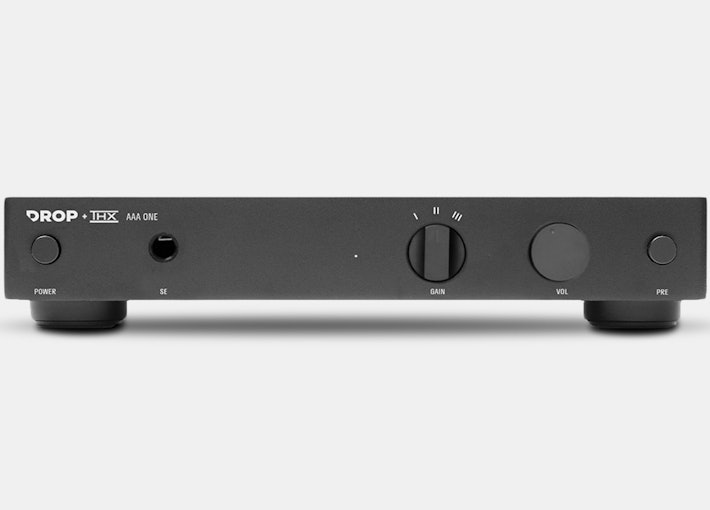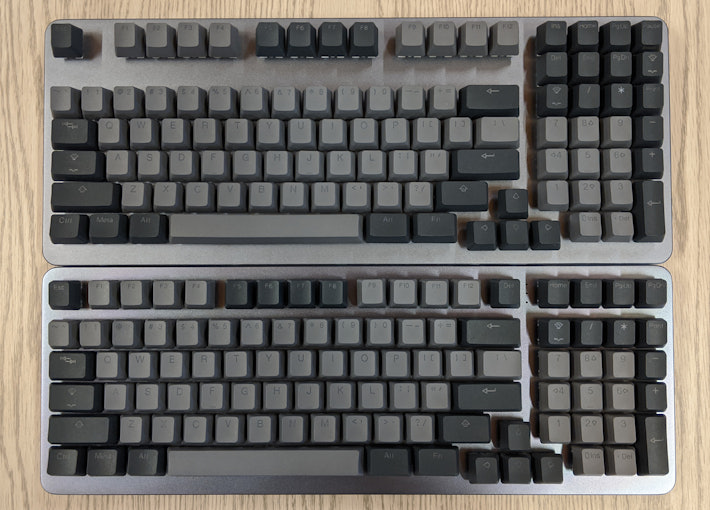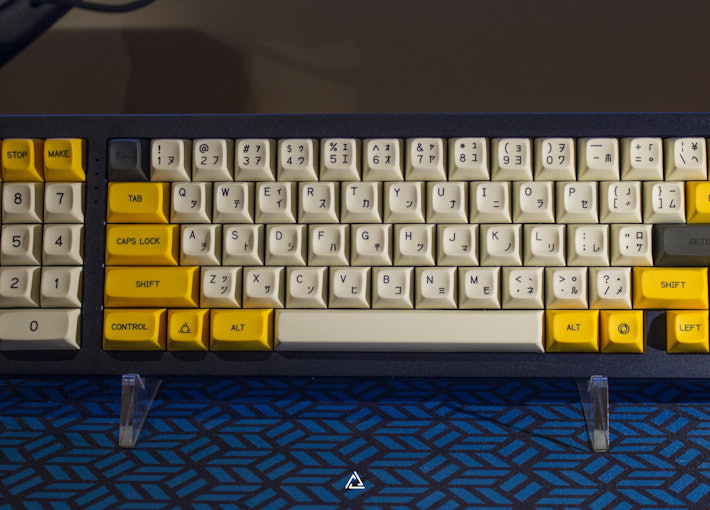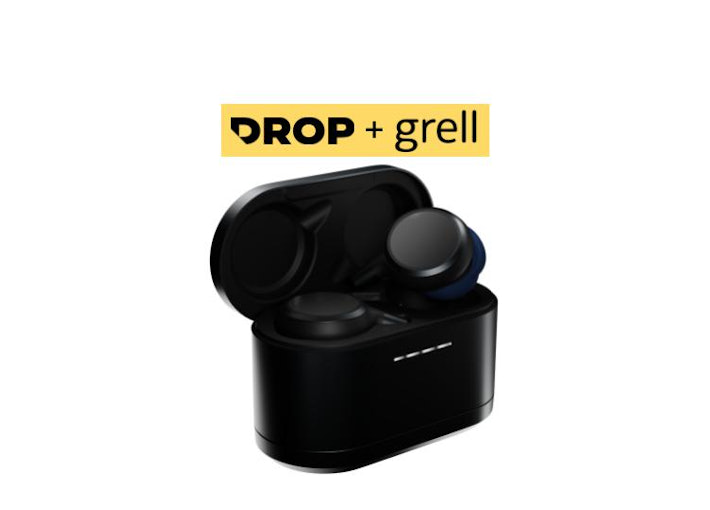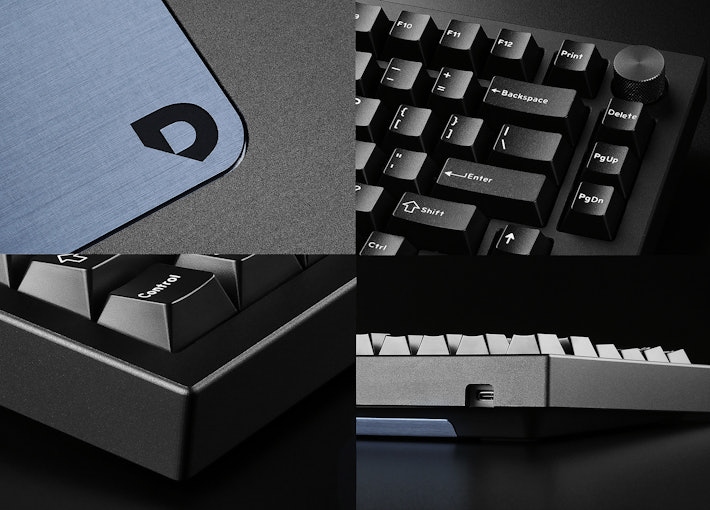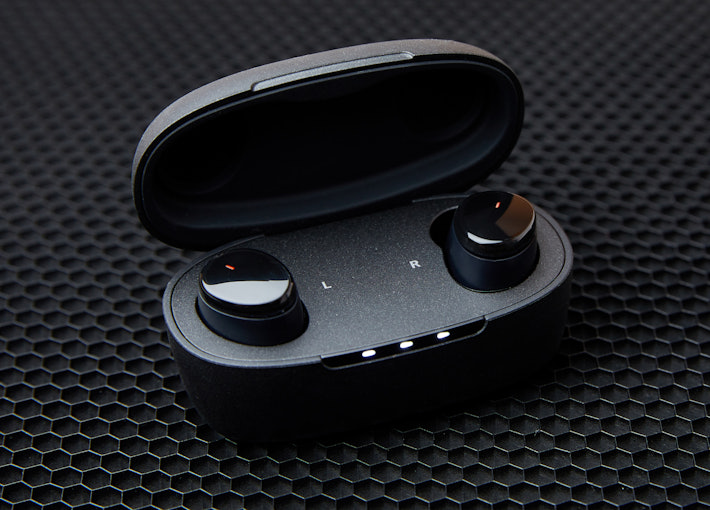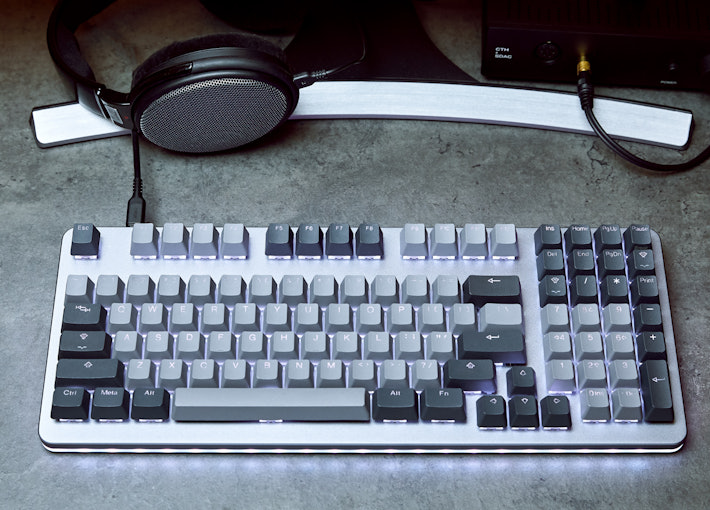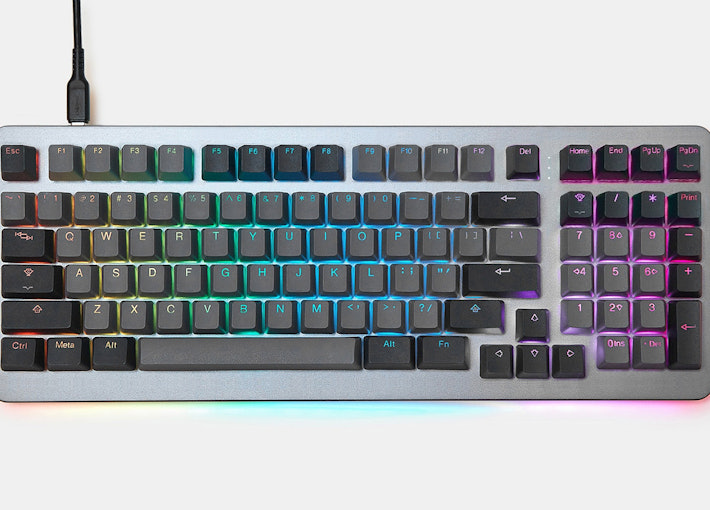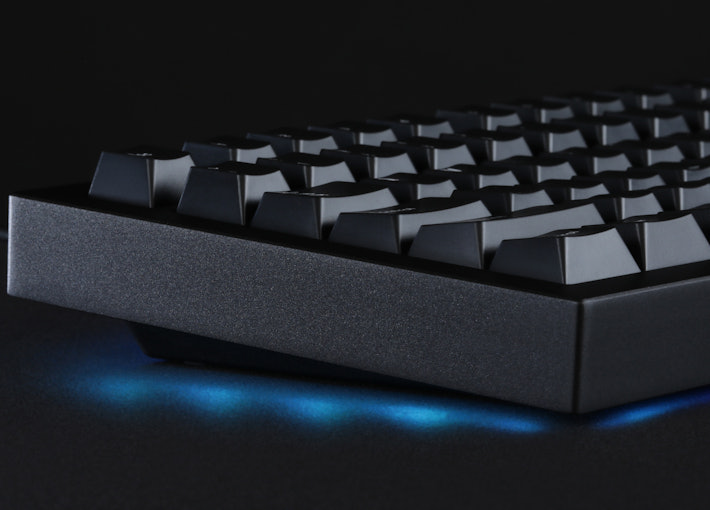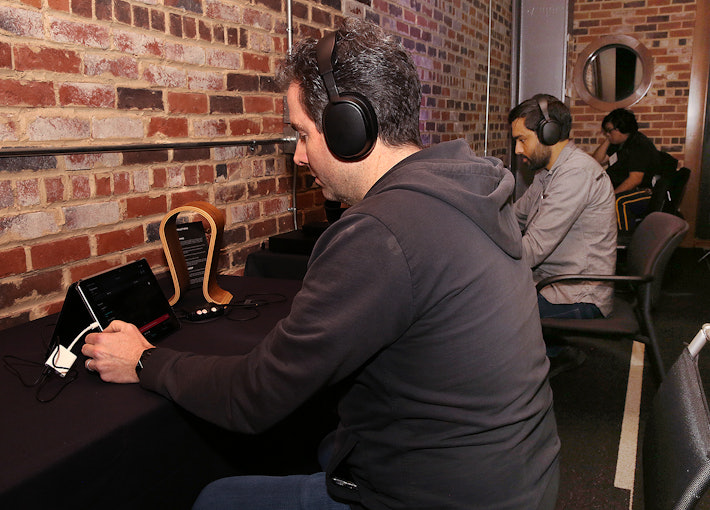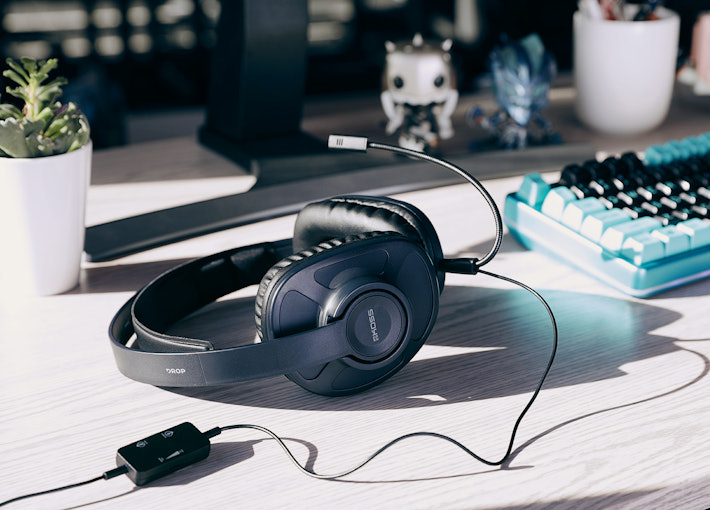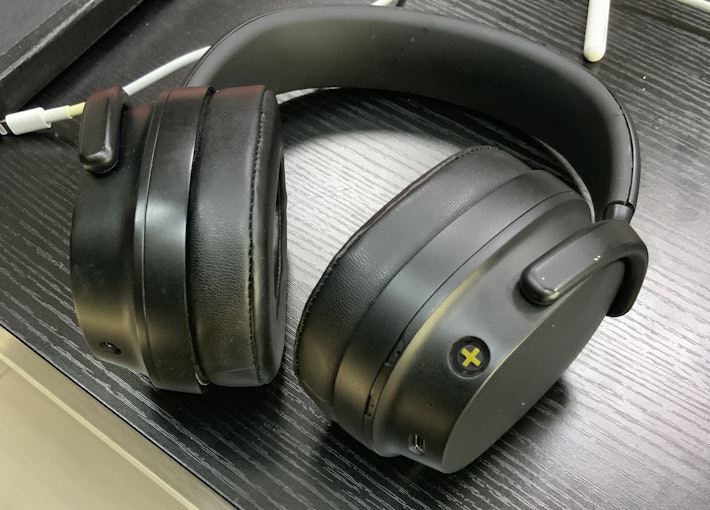Click to view our Accessibility Statement or contact us with accessibility-related questions





















All Communities
Posted in Audiophile

Drop+Audiophile
3436
Apr 23, 2019
Announcing Our First Wireless Bluetooth Headphones
Bluetooth headphones are known for their convenience—it’s great not to have that cable hanging around—but in the past, they haven’t been able to hold a candle to wired headphones when it comes to sound quality.
We’re looking to change all that with our next project, our first foray into Bluetooth headphones. Taking advantage of advancements in Bluetooth technology and battery design, we’re aiming for the best of both worlds: an audiophile sound in a wireless package.
These headphones will use Bluetooth 5.0, the latest version of the Bluetooth standard, and communicate over Bluetooth Low Energy for reduced power usage and a longer battery life. Bluetooth 5.0 is faster than older versions and can operate over greater distances. Plus, it allows you to play audio on two connected devices at once.
They’ll feature the latest Qualcomm® Bluetooth chipset and THX AAA™ technology, which is known for delivering the world’s highest fidelity audio with infinitesimally low levels of...
Posted in Audiophile

Drop+Audiophile
3436
Apr 21, 2020
Introducing Drop + THX AAA ONE Linear Amplifier
With the success of the AAA™ 789 Linear Amplifier (and now the Panda Wireless Headphones), our partnership with THX is only getting stronger. Now, we’re excited to announce our latest collaboration: the Drop + THX AAA™ ONE Linear Amplifier.
The ONE will be the new entry point for ultra-clean, linear sound in a desktop headphone amplifier. Just like the 789, it’s designed to optimize your audio experience. While the 789 provides more power with its balanced design, the ONE will still drive most headphones with ease. It’s also built with an all-metal enclosure to protect the technology inside. Now we’re including a pre-amplifier output that allows you to connect the amp to a powered speaker and switch back and forth between headphones and speakers on the fly.
Here are some other highlights:
Ultra-low distortion AAA™ circuit with high-voltage swing
Ultra-low noise THX architecture (less than 1 uV of output noise)
Power to drive demanding headphones with ease (Up to 2000...
Posted in Audiophile

Drop+Audiophile
3436
Dec 11, 2019
Panda Announcement
Over the years we’ve seen countless discussions full of audiophiles wishing for a strong wireless offering. With the wireless headphone space focused on noise-canceling over audio quality, it’s been tough for us to leave the Altoids tins and rubber-bands behind.
Thanks to your support and interest, I’m excited to finally announce the Drop + THX Panda wireless headphone; the first portable wireless headphone to deliver full-system sound.
Driver
Panda utilizes a Planar Ribbon Driver. This driver type is a subset of planar magnetic drivers that utilizes a dual sided magnetic structure on a braced diaphragm to deliver a carefully-tuned, phase-correct sound. This driver technology has only been used in one series of headphones previously, the Oppo PM-1, PM-2, and PM-3.
Amp
Feeding the Planar Ribbon Driver, you’ll find a discrete THX-AAA amplifier implementation designed by our team in collaboration with THX. This amplifier can drive Panda to comfortable...
Posted in Mechanical Keyboards

Drop+MechKeys
4399
Nov 11, 2019
Pre-Production Sample
We received a couple of the pre-production samples of the SHIFT last week. This is one of the key milestones for getting the keyboard ready for mass production.
Here is a side-by-side photo showing our original SHIFT design and the new updated one.
Our next steps are to update the firmware on the new SHIFT along with ensuring the various mechanical / electrical parts are to spec.
I’m pretty excited about checking off this step and we will be updating as we hit more milestones.
Let me know what you think in discussion!
Posted in Mechanical Keyboards

Drop+MechKeys
4399
Nov 22, 2019
Samples Approved!
Pre-production samples were sent to @Zambumon this week and he has approved them for production!
To quote Zambumon:
Just got the MT3 Serika's final samples. The results are beyond fantastic. Hope you guys enjoy every detail of this set as much as I do.
Here are a few photos of the set - let us know what you think!
Posted in Mechanical Keyboards

Drop+MechKeys
4399
Jun 28, 2019
The Mitolet Kit
The Mitolet violet color is a result of a sampling mistake during one of MiTo’s projects, but the color turned out to be so beautiful in real life that he decided to include it with the Pulse SA R3 project. The design became a hit and Pulse GMK kit wouldn’t be complete without an extra versatile and compact kit - the Mitolet, which includes MiTo’s mysterious XX) face design and universal keycaps to suit almost all ortholinear, 60%, 65%, 75%, TKL and custom keyboards.
Posted in Audiophile

Drop+Audiophile
3436
Feb 4, 2020
Drop the Needle
At Drop, we’ve earned a loyal following through our exceptional headphone and headphone amp collaborations. From our original collaboration with the AKG K7XX back in 2014 to our best-selling Sennheiser HD 6XX and our newly-released Drop + THX Panda, we've worked closely with some of the industry's top names to develop great-sounding products for every listener. Having established ourselves in this area, we are now looking to branch out in the two-channel space, which includes speakers, turntables, and speaker amps.
The Drop + Audio Technica Carbon VTA turntable will mark our first turntable collaboration. While vinyl has remained a popular listening format among the dedicated, its popularity has skyrocketed in recent years to include many new fans searching for a more tactile music listening experience.
As fans of vinyl ourselves, we created a great sounding turntable that hits all the marks: user-friendliness for new vinyl listeners, and exceptional performance for...
Posted in Audiophile

Drop+Audiophile
3436
Aug 20, 2021
Drop + Grell TWS1X First Look
We’re Teaming Up With Audio Legend Axel Grell
You read that right! Drop will soon be partnering with the venerable Axel Grell, known for his work developing many of Sennheiser’s most notable headphones.
Since leaving Sennheiser in 2018, Axel has started his own audio brand. Having worked with Axel in the past, we know how dedicated he is to creating excellent audiophile sound. For our next combined effort, we’ll be focusing on an audiophile-worthy True Wireless IEM, built from the ground up.
At the core of the product is a custom-designed 10mm dynamic driver able to deliver a detailed-yet-punchy sound. Also critical to the product is its adaptive, active-noise-cancellation circuitry. While most ANC headphones are good at attenuating high frequencies, we worked to develop a system that filters out even more of the surrounding environment—and does so without compromising the quality of the audio signal.
Be on the lookout for the TWS IEM in the coming weeks, and let us...
Posted in Mechanical Keyboards

Drop+MechKeys
4399
Jul 28, 2022
Meet the SENSE75: Our Newest Keyboard
When we decided to create a new Drop-exclusive keyboard, we didn’t know we would land on a 75% layout. Back in early 2020, we kicked off concepting and preliminary specs around the idea of a gasket-mount keyboard. It was set to be an expansion of our existing lineup—and at the time, popular interest in gasket-mount builds seemed to align with interest in compact layouts.
As a result, work on an “Alt Gasket Version” started in earnest with drawings and specifications.
It wasn’t long until we noticed a tidal wave of community interest for 75% layouts. In fact, it looked quite clear that 75% was “the new meta”—so ultimately, we decided to follow the community with our take on the 75% layout. That meant starting fresh with new drawings, new designs, and new engineering.
Features for Enthusiasts
After finalizing the layout, we thought deeply about how to make a typing and customization experience that the community would love. Carefully incorporating user...
Posted in Drop Hub

HoffmanMyster
3110
Jun 8, 2023
Our New Community
Hi everyone! We are beyond excited to announce a major update here on Drop.
Introducing: Battlestations
Our new community, Battlestations, is now live! You can find our launch landing page here. Please read the official announcement from our CEO, Jef, for an additional perspective on why this new community means so much to us.
The new community allows us to feature products outside of the two mainstay communities that you’ve come to know and love: Mech Keys and Audiophile. We know as well as you do that curating the perfect workspace is a very personal endeavor, and also non-trivial. Finding just the right thing for your setup can take a lot of work. We hope that by adding this new community here on Drop we can provide a space for highly-regarded and unique desk items that will be sure to complement the accessories you have already carefully selected for your setup.
Along with the launch of our new community, we have a whole host of auxiliary events and giveaways to...
Posted in Audiophile

Drop+Audiophile
3436
Apr 23, 2019
Music Listening With More Freedom Than Ever
They’re here! The Drop + NuForce Move IEMs promise best-in-class connectivity and wireless performance. Each pair features True Wireless technology: the result of a year and a half of collaborative development and testing. Boasting a full-range sound, remarkable clarity, an IPX5 waterproof rating, and 24 hours of battery life with the included charging case, they’re a great option for running on the treadmill, commuting to work, and transitioning seamlessly between tasks at home.
Posted in Mechanical Keyboards

Drop+MechKeys
4399
Apr 23, 2019
Introducing the SHIFT Mechanical Keyboard
The final prototypes have been approved—and they look downright dapper, if we may say so ourselves.
Made with a sleek aluminum case, the Drop SHIFT mechanical keyboard allows you to customize the backlighting, layout, and feel. With dye-subbed PBT keycaps and your choice of switches, it’s ready for anything, whether you use it for gaming, programming, or cranking out emails. We hope you’re as delighted with it as we are!
Posted in Mechanical Keyboards

Drop+MechKeys
4399
May 23, 2019
We're Redesigning the SHIFT Based on Your Feedback
Thank you to everyone who chimed in on the discussion of our SHIFT mechanical keyboard. We've received lots of responses around the design and layout—and we value each and every comment. With your feedback, we’ve decided to make some important changes to the keyboard.
The new, more compact SHIFT will have the following changes made to it:
1. We’re removing the second row of keys from the numpad cluster. This allows the function row and the top row of the numpad cluster to be pulled down closer to the alpha cluster. It will also match the distance found on the CTRL and other, similar TKL keyboards. As a side benefit, people with smaller hands can more easily reach the F row.
2. We’re adding an additional 1u (delete) key to the function cluster. As a result of this addition, the F1–F12 keys will be shifted. This change results in a more easily accessible delete key and a more uniform, aesthetically pleasing look.
3. We’re adding three RGB indicator lights for the Caps...
Posted in Mechanical Keyboards

Drop+MechKeys
4399
Aug 19, 2022
Refining Form, Finish, and Functionality
Diffusing the Diffuser
We love RGB, but we also understand that it’s not for everyone. The problem with integrated RGB designs is that even when you turn them off, the plastic diffusers are still visible—a byproduct of RGB that some users find visually unappealing. Solving this issue, the SENSE75 has its LED diffusers hidden on its underside of the keyboard, making them entirely invisible from standard viewing angles.
When turned on, the subtle LED underglow casts on the desk surface providing a natural and pleasant looking halo. Turned off, the keyboard’s minimalist design takes over and keeps the focus on its soft lines and curved transitions.
Applying the App
We know how important it is to have full, customizable control over your keymappings and lighting options. That's why we’ve built a Windows- and Mac-compatible configurator application for the SENSE75—complete with an easy-to-use interface that lets you quickly customize your keys and lighting. Future versions...
Posted in Audiophile

Drop+Audiophile
3436
Jan 17, 2020
First Impressions: Changing the Headphone Game
First impressions are coming in and we couldn’t be happier with the response! Take a look at what the community and the press is saying about our latest collaboration: the world’s first wireless headphone with full-system sound.
Community
Jude, Founder Head-Fi - "The DROP + THX Panda is an audiophile-class wireless (and wired) planar ribbon headphone with a rich tonal balance and excellent detail. I love that the Panda was tuned acoustically (no DSP), supports high-resolution Bluetooth with aptX HD and LDAC, and has an integrated THX AAA amplifier. I measured the DROP + THX Panda in Head-Fi's measurement lab, and its frequency response and extraordinarily low THD were essentially identical in both wireless and wired modes!"
Marv Chen, SBAF - "In comes Drop to resurrect the PM-3 as the Panda, but their style, has added their flourishes: revised tuning, a THX AAA amp with feedforward distortion correction, and wireless Bluetooth functionality. How 'bout that? How many of...
Posted in Mechanical Keyboards

Drop+MechKeys
4399
Jun 27, 2019
The Hangul & Arabic Kits
The Hangul & Arabic Kits
MiTo believes the calligraphic style of Arabic glyphs pair very well with the black color and complementary cyan. Same goes for the Hangul alphabet, which gives a futuristic and unique look to the keycap set. Both kits are available on their own, which means that they are affordably retro-compatible with any GMK keycap set previously designed, including Laser GMK.
Posted in Audiophile

Drop+Audiophile
3436
May 10, 2019
We’re Working With Koss on a Gaming Headset!
Audiophiles are no strangers to Koss. After all, the Wisconsin-based company has been at the forefront of audio innovation since developing the world’s first stereo headphone in 1958.
Over the years, we’ve sold many of Koss’s flagship headphones and worked with the company extensively to create a few collaborations of our own. However, we’ve never entertained the idea of working together to create a gaming headset—until now.
Koss is known for its affordable, high-quality audio gear. Our goal with this project is to make a performance-driven headset that won’t break the bank and can still be used in a professional setting. Based on the Koss GMR-540-ISO gaming headset, our version will seamlessly transition from the game room to the office to the streets. It will have all the functionality of a PC and console gaming headset, with a look you can wear out and about.
As far as tuning, we’re not reinventing the wheel. Like the original, our closed-back gaming headset will...
Posted in Audiophile

Drop+Audiophile
3436
Aug 2, 2019
Control Scheme
When enthusiasts talk about control schemes, they mostly complain. Which seems fair given most control schemes aren't great.
Among the most consistent points, we see displeasure toward touch controls, and intuitive menu prioritization (single tap for virtual assistant, double tab for next track, etc).
For this headphone, we're using one physical control for all major functions.
The physical controller is a short throw joystick + button.
We're still developing the joystick surface finish and shape.
Here's a summary of the control scheme:
To clarify the volume up and volume down, you're pushing the stick up or down with your thumb. Shockingly, up is volume up, down is volume down.
What do you think? Did we draw the right conclusions on intuitive prioritization? Let us know your thoughts!
Posted in Mechanical Keyboards

Drop+MechKeys
4399
Jun 27, 2019
The Micons
The Micons Kit
The Micons are MiTo’s futuristic take on a new icon based convention for computer keyboards, inspired by the legendary IBM, Macintosh and Windows words and symbols that nowadays are recognized globally by billions of users, during their everyday computer tasks. So far, the Micons have been present in project such as Canvas, Godspeed, Laser and many others.
The idea behind the Micons is that the symbols should:
1 - Resemble the classic designs by Apple and Microsoft;
2 - Be simple and intuitive;
3 - Feature geometrical shapes;
4 - Use no more than 3 graphic elements;
5 - Be suited for both dye sublimation and doubleshot manufacturing techniques.
Posted in Audiophile

Drop+Audiophile
3436
Jan 25, 2023
Grill Us—& We’ll Grille You
As mentioned in the first story, one detail that makes the BMR1 Nearfield Monitors unique is their removable, customizable grilles. By default, the BMR1s don’t actually come with any grilles. This is because:
1. While the grilles are designed to minimize the audible impact, audiophiles know grilles will inherently add some coloration.
2. We wanted listeners to only pay for what they need and make the speakers part of their workspace; and plenty appreciate the bare, industrial look of the exposed BMR1s. But sometimes, you want a cleaner aesthetic—one you can customize. That’s where the grilles come in.
Made of coated steel with an ABS frame, each grille attaches to the BMR1 with a satisfying magnetic click and a sleek form factor. Lightweight yet durable, they provide added protection for the drivers and surfaces of the speakers. But their main function? Personalization. We are working on a number of grille concepts and planning to include the...














